Your stay at The Chalet du Pré
Skiing the way you like it…
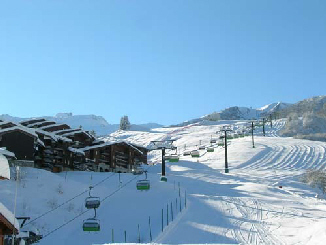
From 1400 m to 2250 m altitude, forests, gentle slopes of the mountain pastures and vertiginous slopes of the summits, Le Grand Domaine is a grouping of Valmorel, Doucy-Combelouvière and St François Longchamps.
Le Grand Domaine also boasts 3,600 hectares of snow, 49 ski lifts, 202 snow cannons for 150 kilometres of pistes, and a snowboard area to ensure maximum enjoyment all season long.
Activities
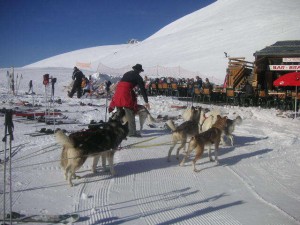
The Chalet du Pré offers "Off-Piste" holidays with mountain guides and "Safari Ski" organisation. If you are available for 2, 3, 4 or 5 days and would like to ski in a different way, you will find in this à la carte programme several dream free-ride itineraries in the biggest resorts in the Tarentaise.
Ski lessons
Just 70 m from The Chalet du Pré, the Valmorel ski school (ESF) has an annex on the site of Le Rocher ski lift.
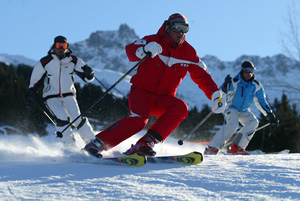
- Lessons are organised according to enrolments, except during the February school holidays when group lessons for children are held from Sunday to Friday from 2.30pm to 5pm for beginners and flakes (preparation for the 1st star test) and from Monday to Saturday from 9.30am to 12pm for 1st and 2nd stars (preparation for the 2nd and 3rd star test)
- Private lessons are between 12:30pm and 2:30pm.
- Group lessons for adults take place in Valmorel, with the possibility of private lessons for adults from Le Rocher ski lift.
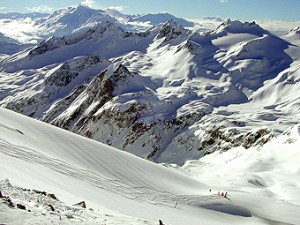
For further information, please contact the E.S.F. via its website: www.esf-valmorel.com
The Morel Valley
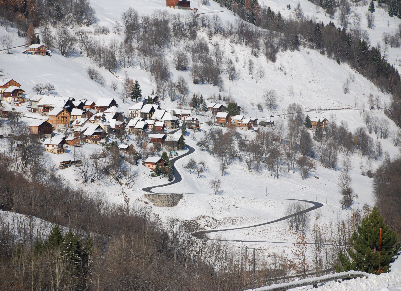
The Morel valley, ideal for a holiday rental in Savoie, Valmorel La Belle is a model of architectural unity that respects its mountain environment. A charming resort and the first major resort of the Tarentaise, nestling on the edge of the forest on the slopes of the Cheval Noir.
No concrete but noble materials: wood, stone, slate.
No building but large chalets with skis at your feet.
No cars but a pedestrian street, covered passageways, charming squares and inner courtyards.
The hamlet
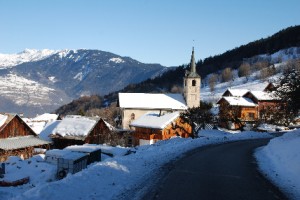
Le Pré is one of the 13 hamlets of Les Avanchers-Valmorel municipality.
Ideally located away from the resort, it nevertheless has direct access to the ski area.
Pedestrian and Nordic trails are right next to the village.
Getting around and out is easy thanks to the Valmobus (free shuttle buses every 20 minutes), which serve Le Pré.
The Chalet du Pré is committed

Help us to make your stay sustainable
- Remember to switch off lights and electrical appliances when we go out and turn off the heating when you open the windows.
- Babies are at their most comfortable at 19 degrees, so let’s do the same!
- Do not let the water running when brushing your teeth or shaving. If you detect a leak, mention it and prefer showers to baths
- Drink tap water, mountain water is wonderful
- In the mountains, don’t leave your rubbish behind, if there is no bin nearby, take it with you
- Stay on the marked trails, do not feed wild animals and do not pick unknown plants
- Enjoy nature by simply observing it
- On holiday, let’s live with the seasons, and help to maintain local traditions and economy by favouring local produce
The Chalet du Pré safety tips
To make sure you arrive at the Chalet du Pré safely, we’d like to remind you of a few basic rules of snow driving. First of all, don’t forget to check the mountain weather forecast.
It’s probably both the stupidest and most useful piece of advice...
Equip your car with chains
The 1st price chain models don’t offer lateral grip on snow, they are dangerous and will soon be banned from sale!
Remember: chains are ineffective on black ice...
Equip your car with special tyres
When fitting them to your vehicle and parking your car on a slope, remember that the models are optimised for driving forwards on snow
The road is dry but...
Keep an eye out for patches of black ice or snow in the shade, they can be treacherous...
How to get out of your parking space ?
It’s been snowing all night and your car is stuck in the snow. Try moving your vehicle forwards and backwards repeatedly. The rocking motion will no doubt enable it to get out of its trough.
If you have to park on a slope, park your vehicle so that the drive wheels are at the bottom: by bearing more of the vehicle's weight, they will have more grip.
Driving
Assess the state of the road, if necessary by getting out of your vehicle. You can also test the grip of your tyres by applying the brakes in an open area.
Be especially careful of rain on very cold ground and slush.
In an emergency, moderate your braking. You must keep the wheels on the ground at all costs or you risk losing control of the vehicle. It is often preferable not to brake (which require a certain amount of reflex control...) and to drive around the obstacle. Use engine braking instead.
Anticipate bends. If the rear of the vehicle skids, gently counterbrake the steering wheel to correct.
Adapt your driving to your vehicle
Beware of 4×4s : they have an advantage when going uphill but, being heavier, suffer from greater inertia when going downhill.
Contrary to popular belief, wide tyres are a handicap on snow. They spread the weight of the vehicle over a larger surface area and, as a result, slide more...
Similarly, vehicles whose engines (which account for a large proportion of the vehicle's weight) are not located above the drive wheels (some BMWs, Mercedes, for example) are at a distinct disadvantaged on snow.
The ideal vehicle: the Citroën 2CV. Light, with very narrow tyres, it climbs everywhere and in all weathers...
To get your ski season off to a good start, here’s a quick reminder of how to stay on the slope.
Adjusting your ski bindings
The correct adjustment of your bindings is essential for your safety. It is important to have them adjusted by a professional. The release levels correspond to a standard, and do not depend on the brand or model of binding.
International rules of conduct the piste
- Skiers must look out for others.
- He must control his speed and the way he skis.
- He must choose a route that does not endanger the person skiing in front of him.
- It is permitted to overtake above, below, to the right and to the left, as long as the skier being overtaken is given enough room to move on.
- Skiers wishing to enter a downhill slope or cross a ski field must first ensure that they can do so without danger to themselves or others by looking upstream and downstream.
- Skiers must avoid stopping unnecessarily in narrow or blinds spots on a downhill run. If a skier has fallen in such a place, he must clear the way as quickly as possible.
- When going uphill, skiers must stay on the edge of the slopes and leave it if visibility is poor. This also applies to skiers descending on foot.
- All skiers must pay attention to the piste signs.
- Everyone must help in the event of an accident.
- All persons who witness an accident or who are themselves been involved in an accident, whether responsible or not, must provide their identity.
Children
Helmets are absolutely essential for children's downhill skiing. Make sure it complies with the EN 1077 standard. Young children are very sensitive to the cold. You need to be very careful in the mountains when they are inactive (carried in a backpack, for example): the consequences of a simple outing in cold weather can be dramatic.
Speed
Control your speed on the slopes! If you think the worst that can happen to you is a broken leg, think again: far more serious accidents happen on the ski slopes because of excessive speed. Skiing fast doesn't mean skiing well, and you'll make more technical progress if you ski at a speed suited to your level.
MOUNTAIN SAFETY: SKI OFF-ROUTS AND FREERIDE
Take a ski and mountain professional with you.
They have a good general knowledge of the mountain, and especially of the massif, the avalanche slopes, crevasses that formed during the previous summer, etc…
Check the weather and avalanche risk map
And don't forget that weather and avalanche risk forecasts are fallible. Allow yourself a margin of safety.
Get equipped
An ARVA (a device used to locate skiers who are equipped with one) is absolutely essential. Make sure it's in good working order, check that the batteries are in good condition and, above all, learn how to use it.
A snow shovel (folding model) is also an essential safety accessory. It will enable you to quickly free your team members and, if necessary, dig a shelter in the snow to spend the night.
A telescopic probe is another essential piece of equipment.
Getting lost, especially in bad weather, is a major risk. Don't forget your map and compass. Consider spending a night on site: extra clothing, 2 survival blankets per person, some food, heaters.
In areas with good coverage, the mobile phones are an undeniable safety factor. Charge it before you leave.
Signals to helicopter rescue
We need help: Standing facing the helicopter with both arms up.
We don't need any help: Standing facing the helicopter, one arm raised.
MOUNTAIN SAFETY : The hamlet Le Pré
BEWARE of snow falling from roofs, do not park your car under a layer of snow that is likely to fall, beware of black ice.
A few tips from The Chalet du Pré to adapt your diet to your stay in the mountain.
You need to pay particular attention to your diet from the second or third day onwards. That’s when your reserves are depleted and you start to feel tired and cramp up.
Breakfast
Breakfast should be as complete as possible and high in calories. Do not hesitate to eat some cereals. Muesli is preferable to other preparations, which are often very sweet. Serve with milk, yoghurt or cottage cheese and a protein supplement such as an egg or cheese (or both)...
Pasta for lunch
Lunch should be an opportunity to take a real break. This lunch should allow you to recharge your batteries. If it is cold, opt for a hot meal.
Lunch should be rich in starchy foods that replenish energy reserves. Choose pasta, rice or wheat.
However, be careful not to eat too large meal, as it cuts into your legs and increases the risk of an accident. You can also opt for brunch in the morning and make do with a sandwich for lunch. But don't forget that lunch is an opportunity to take a real break of at least an hour. After all, rest is essential.
A snack on the slopes
It is recommended to always carry a small snack in your pocket. Choose dried fruits, such as apricots, prunes, figs or dates.
Don't forget energy drinks, which can replace a snack. They provide a direct supply of fuel to the muscles and encourage rehydration.
Easy on the raclette...
Dinner should be the most substantial meal of the day. It's the time when you can 'let your hair down”: it doesn't matter if your digestion takes up a lot of your energy, as you won't be doing any torchlight descents. Nevertheless, avoid raclette or fondue every evening! Instead, have a good soup to rehydrate you, followed by a meat or fish dish with vegetables. Then opt for calcium-rich cheeses and fresh fruit, which are great sources of vitamins and minerals.
Watch out for children!,
During a ski holiday, children need to eat regularly: they tire more quickly than adults. So it's a good idea to have a small snack every hour. When you get back from the slopes, plan a snack for young and old combining slow and fast sugars. For example, accompany your hot chocolate with a bowl of cereal.
Don't forget to drink !
Throughout your stay, don't forget to drink regularly. The cold causes dehydration, through shivering, which you need to compensated. Drink at least 1.5 to 2 litres of water per day to stay well hydrated and avoid cramps. Of course, if it is hot, you'll need more. You set off with a bottle of still water and another of energy drink for example. However, some energy drinks are stimulants and are often too sweet. Try making your own drink, for example using orange juice and adding a few lumps of sugar.
Finally, beware of mulled wine! While it is traditional in the mountains to enjoy this rather comforting drink, you should be aware that alcohol is highly inadvisable during exercise, especially when it is cold. Because it will dilate your blood vessels, making you more sensitive to the cold. Not to mention the risk of accidents due to reduced alertness and reflexes. So, it's best to wait until you get back at the cottage for this kind of extra...
In summary:
Recommended foods
- For energy: pasta, rice, potatoes, cereals, etc...
- Avoid: sauces and chips, which slow down digestion and consume energy.
- For hydration: water, fruit juices, milk, etc...
- Avoid: coffee and alcohol which reduce performance.
- For power: meat, milk, cheese, etc...
- Avoid: dishes in sauce.
- For energy: Oranges and kiwi (rich in vitamin C), bananas (rich in magnesium), cereals (rich in B vitamins).